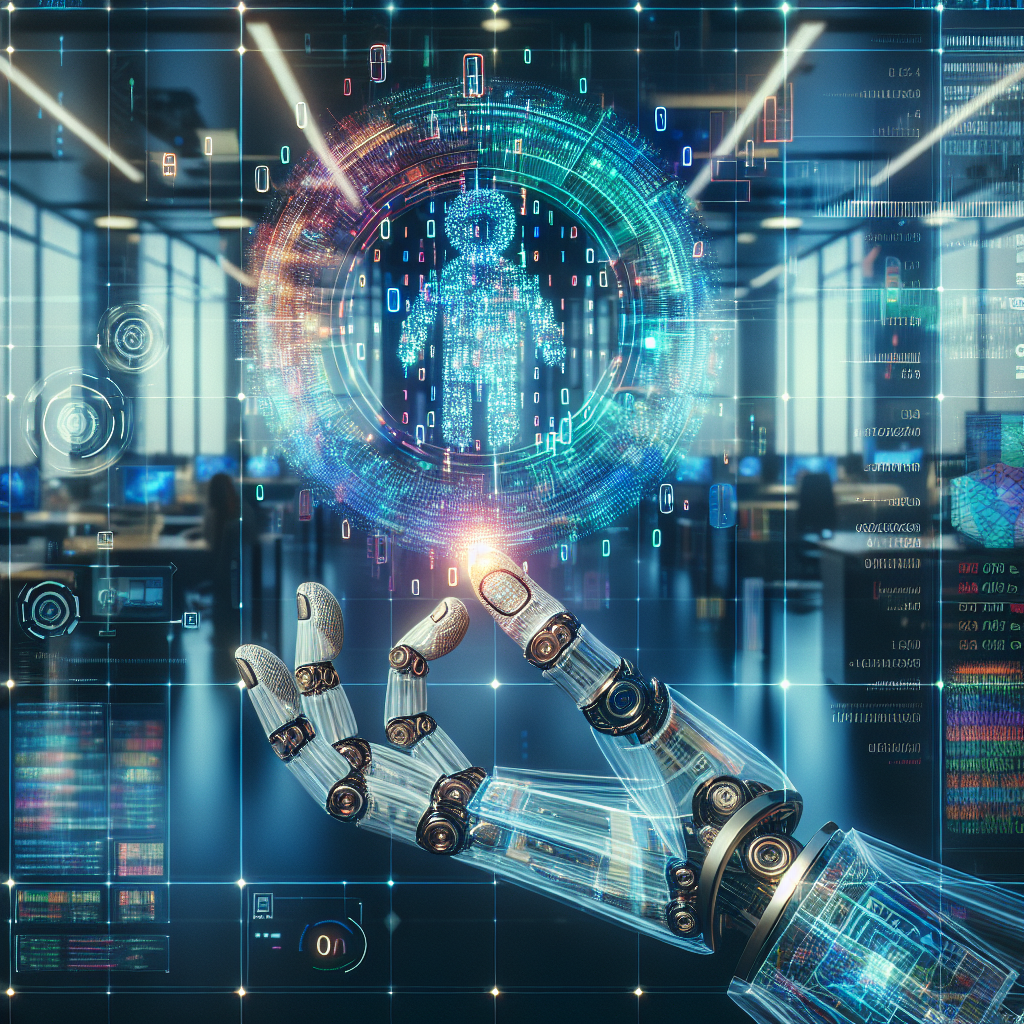The Future of AI Automation in Data Security and Cybersecurity for Financial Services
In today’s digital age, data security and cybersecurity have become critical concerns for financial services organizations. With the increasing volume of sensitive financial data being stored and transmitted online, the risk of cyberattacks and data breaches has never been higher. As a result, financial institutions are turning to artificial intelligence (AI) and automation to enhance their data security and cybersecurity measures.
AI and automation technologies have the potential to revolutionize the way financial services organizations protect their data and systems. These technologies can help detect and respond to cyber threats in real-time, automate routine security tasks, and provide valuable insights into potential vulnerabilities in a system. In this article, we will explore the future of AI automation in data security and cybersecurity for financial services, and how these technologies can help organizations stay ahead of cyber threats.
1. AI and Machine Learning in Data Security
AI and machine learning technologies are playing an increasingly important role in data security for financial services organizations. These technologies can analyze vast amounts of data in real-time to detect patterns and anomalies that may indicate a cyber threat. By using AI algorithms, organizations can identify potential vulnerabilities in their systems and take proactive measures to address them before they are exploited by malicious actors.
One of the key advantages of AI and machine learning in data security is their ability to adapt and evolve over time. As cyber threats become more sophisticated, AI algorithms can learn from past incidents and improve their ability to detect and respond to new threats. This adaptive capability makes AI a powerful tool for enhancing data security in an ever-changing threat landscape.
2. Automation in Cybersecurity
Automation is another critical component of effective cybersecurity for financial services organizations. By automating routine security tasks, organizations can free up their cybersecurity teams to focus on more complex and strategic issues. Automation can help organizations respond to cyber threats more quickly and efficiently, reducing the risk of data breaches and financial losses.
One of the key benefits of automation in cybersecurity is its ability to streamline incident response processes. By automating the detection and response to security incidents, organizations can reduce the time it takes to identify and mitigate a cyber threat. This can help organizations minimize the impact of a data breach and protect their sensitive financial data from unauthorized access.
3. The Future of AI Automation in Data Security and Cybersecurity
The future of AI automation in data security and cybersecurity for financial services is bright. As AI and automation technologies continue to evolve, organizations will have access to even more powerful tools for protecting their data and systems. Some of the key trends shaping the future of AI automation in data security and cybersecurity include:
– Enhanced threat detection: AI algorithms will become more sophisticated in their ability to detect and respond to cyber threats. These algorithms will be able to analyze data from multiple sources in real-time to identify potential vulnerabilities and prevent security incidents before they occur.
– Predictive analytics: AI algorithms will use predictive analytics to anticipate potential cyber threats based on patterns and trends in data. By analyzing historical data and identifying potential risks, organizations can take proactive measures to protect their systems from cyberattacks.
– Autonomous security systems: In the future, we may see the development of autonomous security systems that can automatically detect and respond to cyber threats without human intervention. These systems will be able to make real-time decisions to protect sensitive financial data from unauthorized access.
– Collaboration between AI and human experts: While AI and automation technologies will play a critical role in data security and cybersecurity, human expertise will still be essential. In the future, we may see increased collaboration between AI algorithms and human experts to enhance cybersecurity measures and protect financial data from cyber threats.
4. FAQs
Q: How can AI and automation help financial services organizations protect their data from cyber threats?
A: AI and automation technologies can help financial services organizations detect and respond to cyber threats in real-time, automate routine security tasks, and provide valuable insights into potential vulnerabilities in a system. These technologies can enhance data security measures and protect sensitive financial data from unauthorized access.
Q: What are some of the key benefits of using AI and automation in data security and cybersecurity for financial services?
A: Some of the key benefits of using AI and automation in data security and cybersecurity for financial services include enhanced threat detection, predictive analytics, autonomous security systems, and collaboration between AI and human experts. These technologies can help organizations protect their data from cyber threats and minimize the risk of data breaches.
Q: What are some of the key trends shaping the future of AI automation in data security and cybersecurity for financial services?
A: Some of the key trends shaping the future of AI automation in data security and cybersecurity for financial services include enhanced threat detection, predictive analytics, autonomous security systems, and collaboration between AI and human experts. These trends will help organizations stay ahead of cyber threats and protect their sensitive financial data from unauthorized access.
In conclusion, AI automation is poised to revolutionize data security and cybersecurity for financial services organizations. By leveraging AI and automation technologies, organizations can enhance their data security measures, protect sensitive financial data from cyber threats, and stay ahead of cyberattacks in an ever-changing threat landscape. As these technologies continue to evolve, organizations will have access to even more powerful tools for protecting their data and systems from cyber threats.

